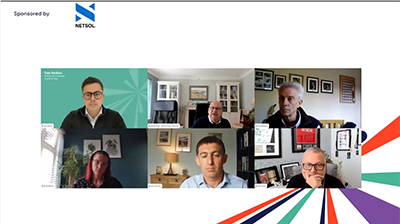
Drivers in London could be paying by the mile for travelling on the capital’s roads by the end of this decade, as part of moves to reduce car traffic by 27% by 2030. A report commissioned by the Mayor of London suggests abolishing all existing road user charges – such as the Congestion Charge and ULEZ - and replacing them with a pay per mile scheme, with different rates depending on how polluting vehicles are, the level of congestion in the area and access to public transport.
Such a road pricing scheme would likely have exemptions and discounts for those on low incomes and with disabilities, as well as consideration around support for charities and small businesses. The report, produced by Element Energy, looks at a number of options designed to tackle rising pollution levels and meet carbon emission targets. They include:
- Extending the Ultra Low Emission Zone (ULEZ) beyond the north and south circular roads to cover the whole of Greater London, using the current charge level and emissions standards.
- Modifying the ULEZ to cover the whole of Greater London and adding a small clean air charge for all but the cleanest vehicles.
- Introducing a low-level daily charge across all of Greater London for all but the cleanest vehicles to nudge behaviour and reduce the number of short journeys by car
- Introducing a Greater London boundary charge, which would charge a small fee to non-London registered vehicles entering Greater London, responding to the increase in cars from outside London travelling into the city seen in recent years.
While the road pricing scheme is identified as a key option, and Transport for London (TfL) has been asked to start exploring the technology required to introduce this, the Mayor acknowledged the necessary systems are “still years away from being ready.”
Emissions challenge
Element Energy’s research shows that between 2000 and 2018, London achieved a 57% reduction in workplace greenhouse gas emissions, a 40% reduction in emissions from homes, but just a 7% reduction in emissions from transport.
In order to reduce transport emissions by anywhere close to the amount required to clean up London’s air, achieve net-zero by 2030 and cut congestion, the report says the capital will have to see a significant shift away from petrol and diesel vehicle use and towards walking and cycling, greater public transport use and cleaner vehicles. At the moment, just 2% of vehicles on the roads in London are electric.
In addition, the capital has seen a shift to driving during the pandemic with the cost of congestion rising to over £5 billion last year, leading to gridlocked roads and toxic air pollution. The number of miles being driven in the capital has increased in recent years, despite statistics showing that more than a third of car trips in London could be made in under 25 minutes by walking, and that two-thirds could be cycled in less than 20 minutes.
Consultation opens
The Mayor and TfL have said they will now begin a period of consultation with Londoners, local government and businesses about the way forward to achieve lower emissions and better air quality.
Subject to consultation and feasibility, the chosen scheme would be implemented by May 2024.
The Mayor of London, Sadiq Khan, said: “We have too often seen measures to tackle air pollution and the climate emergency delayed around the world because it’s viewed as being too hard or politically inconvenient, but I’m not willing to put off action we have the ability to implement here in London. I’m determined that we continue to be doers, not delayers – not only to protect Londoners’ health right now, but for the sake of future generations to come.
“It’s clear the cost of inaction – to our economy, to livelihoods, to the environment and to the health of Londoners - would be far greater than the cost of transitioning to net-zero and reducing toxic air pollution. That’s why I’m today beginning a conversation with Londoners, local government and businesses about the best way forward to create the green, sustainable city we all want to see.”






